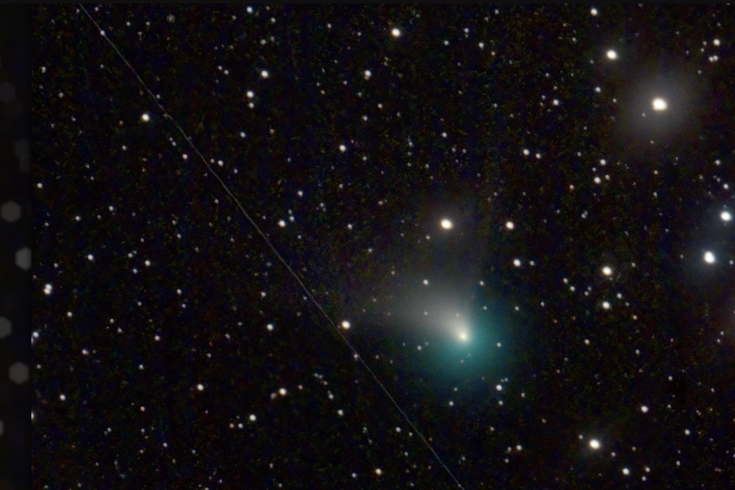
January 02, 2023
 Hisayoshi Sato/via NASA/YouTube
Hisayoshi Sato/via NASA/YouTube
NASA believes a rare comet, known as C/2022 E3 (ZTF), will be visible to the naked eye in late January or early February. The comet was first spotted last March.
Stargazers might have a shot at spotting a comet this year, no telescope or binoculars required.
According to NASA projections, a comet known as C/2022 E3 (ZTF) is currently soaring through the inner solar system, and on course to make its closest approach to the sun on Thursday, Jan. 12. It will then swing toward Earth, hitting its closest point on Feb. 2.
Since the comet has a "brighter greenish" center and a long tail, astronomers believe it could be visible in the sky this month or early next, possibly without a telescope. That would make it the first comet visible to the naked eye since NEOWISE in 2020, the Verge reports.
C/2022 E3 (ZTF) was first spotted by scientists at the Zwicky Transient Facility at CalTech in March, when the comet was within Jupiter's orbit. Since then, it has crept closer to Earth, and its brightness has intensified. Space geeks across the East Coast caught the comet on camera around Christmas, posting pics with timestamps in the early morning hours.
☄️The #Christmas #Comet, C/2022 E3 ZTF, seen at 4:20 am. Photo by Elliot Severn#astronomy #astrophotography pic.twitter.com/oBRUpdSH3k
— Cady Coleman (@Astro_Cady) December 25, 2022
C/2022 E3 ZTF was discovered earlier this year and is starting to put on a show. It will gradually brighten over the coming month and could very well be visible to the naked eye by late January.
— Brennan Gilmore (@brennanmgilmore) December 28, 2022
This photo is around an hour exposure from 4-5am this morning in central Virginia. pic.twitter.com/KkBR0hKBUH
Though comets are famously fickle, astronomers believe C/2022 E3 (ZTF) should be visible to the naked eye in the Northern Hemisphere, including Philadelphia, in mid- to late-January, while those south of the equator will have to wait until February. Space.com recommends searching for the comet in the morning when the moon is barely visible in the sky, such as during a new moon phase. The next new moon is slated for Jan. 21.
The last time C/2022 E3 (ZTF) was this close to the Earth was in the Stone Age, and it isn't expected to return again for 50,000 years — so if you're serious about seeing it, set an alarm.
Follow Kristin & PhillyVoice on Twitter: @kristin_hunt
| @thePhillyVoice
Like us on Facebook: PhillyVoice
Have a news tip? Let us know.